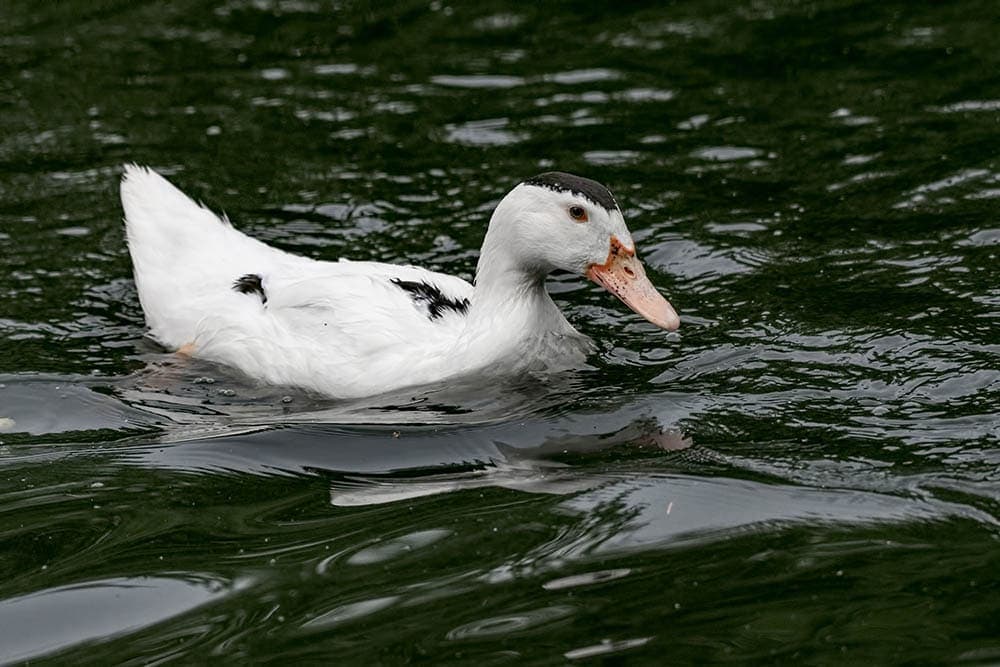Ducks are fun to watch and feed at the park. They also make great backyard pets and farm animals. There are dozens of domestic duck breeds in existence today, all of which have their own unique characteristics. One interesting duck breed that deserves attention is the Ancona duck. Let’s take a look at the origins, uses, and general characteristics of this hardy duck breed.

Quick Facts About the Ancona Duck

| Breed Name: | Ancona |
| Place of Origin: | United States |
| Uses: | Eggs, meat |
| Male Size: | 6–7 pounds |
| Cow (Female) Size: | 5–6 pounds |
| Color: | Chocolate and white, black and white, silver and white, lavender and white, tricolored |
| Lifespan: | 8–10 years |
| Climate Tolerance: | Adaptable to various climates |
| Care Level: | Moderate |
| Production: | Moderate |
| Temperament: | Active, friendly |
Ancona Duck Origins
Many used to believe that the Ancona duck originated in Britain, but research has uncovered that these ducks likely hail from the United States. An old article published in 1913 shows that the breed was originally developed in New York by a man named W.J. Wirt. Today, the breed is popular among backyard breeders and farmers throughout the United States.
Ancona Duck Characteristics
These are gentle, friendly ducks that like to stay active throughout the day. However, they are careful to stay near their home base for protection, so they can usually be trusted to free range. They get along well in large groups, and they can live happily with other duck breeds that are also friendly and gentle.

Uses
The most common reason that people raise Ancona ducks is for egg production. They are extremely successful egg layers that can be expected to lay more than 200 eggs per year. Some people also breed these ducks for meat, as they produce moist flesh that rivals that of more popular ducks. Since they are a somewhat rare breed, some people even raise Ancona ducks for show.
Appearance & Varieties
The Ancona duck weighs between 6 and 7 pounds when fully grown. With an oval head and large eyes, these ducks have medium-length bills that are slightly concaved. They typically have round, stocky bodies and stout legs. Their plumage comes in a variety of colors, including black and white, lavender and white, and silver and white. Any color combined with white is acceptable for this breed.
Population/Distribution/Habitat
There is no record as to how many Ancona ducks are in existence today, but they are bred in many areas throughout the United States and other places around the world, like Great Britain. They typically live on farms and in backyard gardens as pets. They can adapt to most types of climates with ease.


Are Ancona Ducks Good for Small-Scale Farming?
Absolutely! These ducks are friendly and easy-going. They like to stay in their familiar spaces, so they don’t require tons of space for foraging. Even a half-acre farm can successfully raise these chickens for eggs or meat. Ancona ducks are also suitable for backyard gardens and large-scale farms.
Related duck breed reads:
Featured Image Credit: Najmi Arif, Shutterstocks
